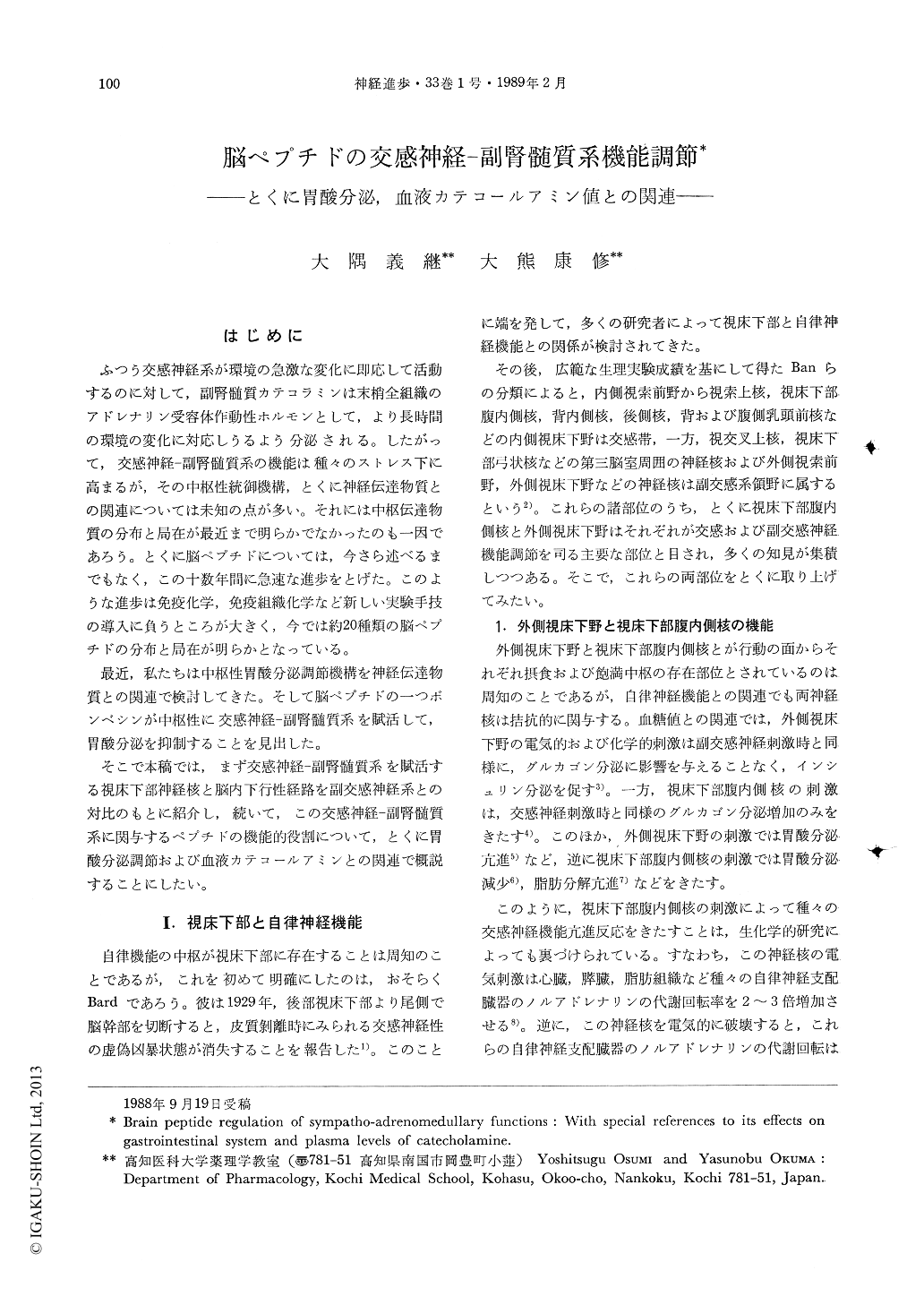Japanese
English
- 有料閲覧
- Abstract 文献概要
- 1ページ目 Look Inside
はじめに
ふつう交感神経系が環境の急激な変化に即応して活動するのに対して,副腎髄質カテコラミンは末梢全組織のアドレナリン受容体作動性ホルモンとして,より長時間の環境の変化に対応しうるよう分泌される。したがって,交感神経—副腎髄質系の機能は種々のストレス下に高まるが,その中枢性統御機構,とくに神経伝達物質との関連については未知の点が多い。それには中枢伝達物質の分布と局在が最近まで明らかでなかったのも一因であろう。とくに脳ペプチドについては,今さら述べるまでもなく,この十数年間に急速な進歩をとげた。このような進歩は免疫化学,免疫組織化学など新しい実験手技の導入に負うところが大きく,今では約20種類の脳ペプチドの分布と局在が明らかとなっている。
最近,私たちは中枢性胃酸分泌調節機構を神経伝達物質との関連で検討してきた。そして脳ペプチドの一つボンベシンが中枢性に交感神経—副腎髄質系を賦活して,胃酸分泌を抑制することを見出した。
Studies described in this review suggest a possibility that some brain peptides such as bombesin, corticotropin releasing factor (CRF) and somatostatin may act as central neurotransmitter and/or neuromodulator regulating sympathoadrenomedullary functions. Roles of various hypothalamic regions such as the ventromedial nucleus and the lateral hypothalamic nucleus in regulating autonomic nervous systems were also briefly described as an introductory note.
Bombesin as well as CRF in the brain induces marked increases in the plasma levels of adrenaline and noradrenaline. On the other hand, somtostatin inhibits the increases in the levels of these catecholamines induced by bombesin, CRF, 2-deoxy-D-glucose and insulin. As related functional roles of these peptides, bombesin and CRF induce central inhibition of gastric acid secretion.

Copyright © 1989, Igaku-Shoin Ltd. All rights reserved.


